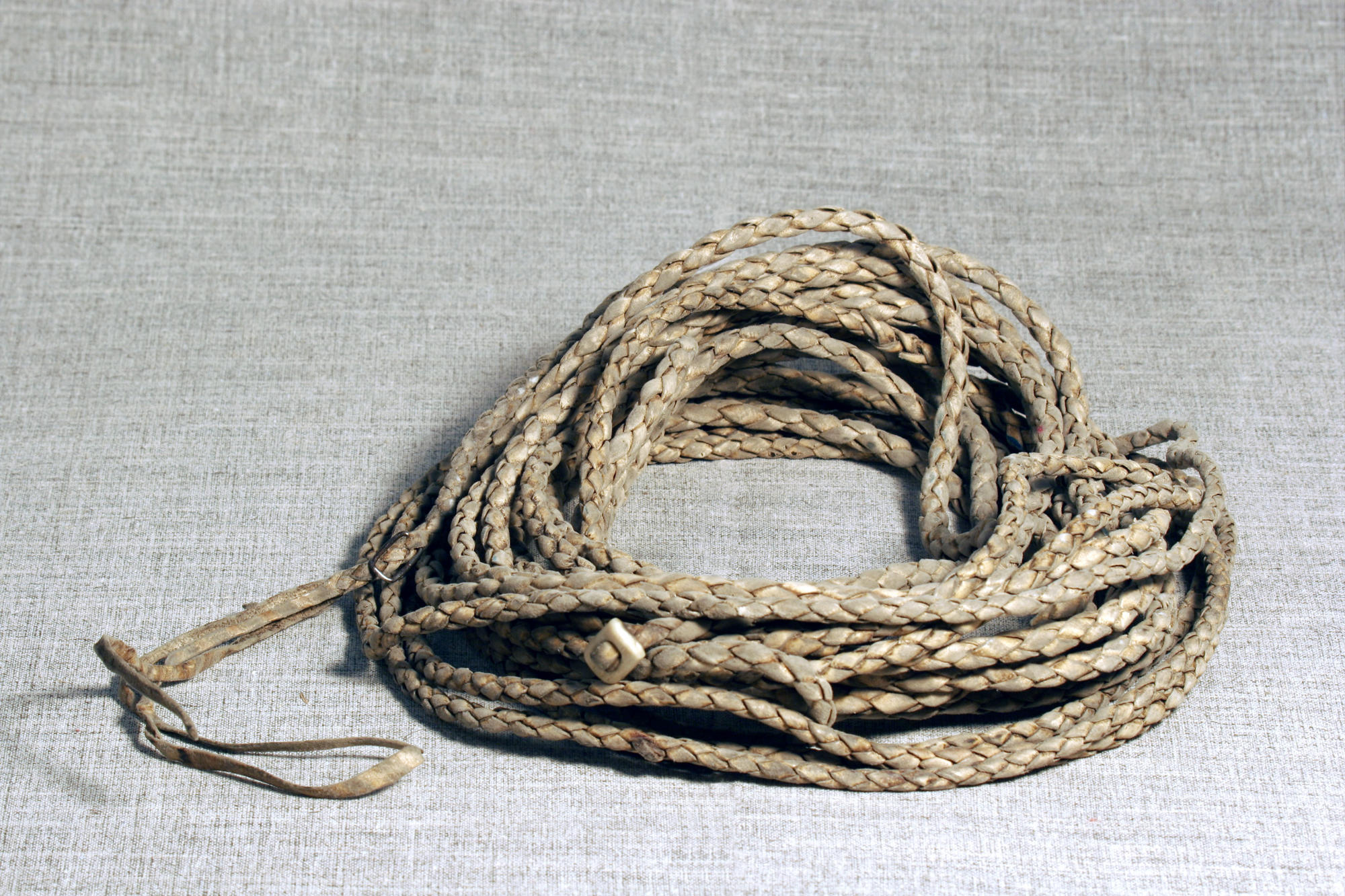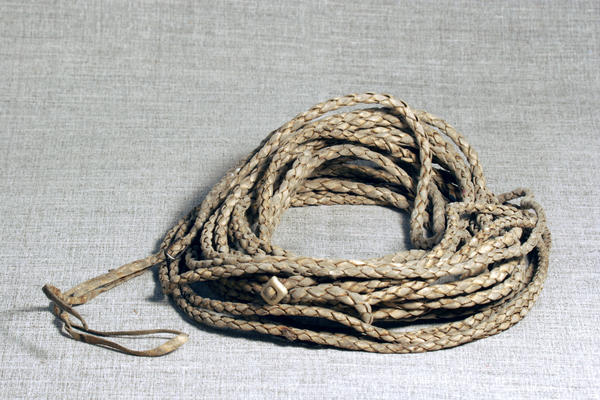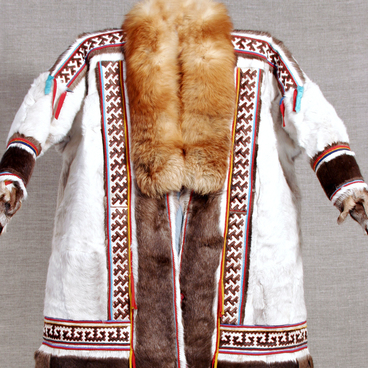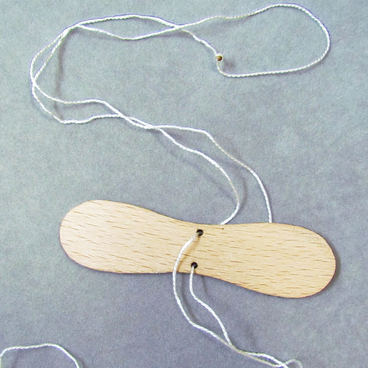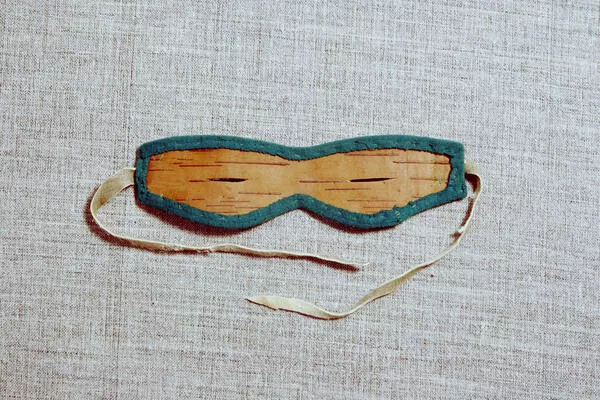Being used to catch an animal, a lasso is one of the main tools of a reindeer herder. The art of throwing a lasso is highly valuable among the Forest NEnets. At every celebration, herders compete in this skill. One of the favorite forms of the contest is throwing a lasso on a ‘khorey’, a long pole used for driving a reindeer team.
To produce a lasso the NEnets use pelts of old reindeers slaughtered in autumn, before mating season. They don’t use pelts of juveniles, females and all the more calves as they are too tender. Preparation of the material for a lasso lasts for about a year: in winter a pelt is stored outside in the cold, in summer it is soured in water or sometimes just rolled up and put into a damp place. When hair can easily be detached, the pelt is taken out of water. After that hair is completely removed by hand and subcutaneous layer is cleared with a scraper. Blanks are cut in two, then the pelt is cut with a sharp knife evenly in the spiral from the center, each band 5-6 mm wide, and rolled. A lasso is braided out of four straps which should not be twisted.
The quality of a lasso plays an important role, its trajectory depends on how well the pelt was prepared, how even the straps were braided and how skilled the master was. As a rule, the length of a lasso is 20-25 m, while its width is 4-5 mm. To fix the loop, one end of a lasso is slipped through a bone block made of reindeer antlers with two orifices. When made in compliance with all traditional requirements, a lasso is an indispensable tool not only for reindeer herding but also as a regular rope. Several tied to one another lassos make a temporary corral for reindeers captured for transport or meat production. It is used to fix the belongings on a sledge during migration. Out-of-use lassos may tie the roof of a chum so that it is not blown off by gusts of wind.
The museum exposition displays the lasso provided by Vladimir Pyak, a Dyanki-Koy camp resident.
To produce a lasso the NEnets use pelts of old reindeers slaughtered in autumn, before mating season. They don’t use pelts of juveniles, females and all the more calves as they are too tender. Preparation of the material for a lasso lasts for about a year: in winter a pelt is stored outside in the cold, in summer it is soured in water or sometimes just rolled up and put into a damp place. When hair can easily be detached, the pelt is taken out of water. After that hair is completely removed by hand and subcutaneous layer is cleared with a scraper. Blanks are cut in two, then the pelt is cut with a sharp knife evenly in the spiral from the center, each band 5-6 mm wide, and rolled. A lasso is braided out of four straps which should not be twisted.
The quality of a lasso plays an important role, its trajectory depends on how well the pelt was prepared, how even the straps were braided and how skilled the master was. As a rule, the length of a lasso is 20-25 m, while its width is 4-5 mm. To fix the loop, one end of a lasso is slipped through a bone block made of reindeer antlers with two orifices. When made in compliance with all traditional requirements, a lasso is an indispensable tool not only for reindeer herding but also as a regular rope. Several tied to one another lassos make a temporary corral for reindeers captured for transport or meat production. It is used to fix the belongings on a sledge during migration. Out-of-use lassos may tie the roof of a chum so that it is not blown off by gusts of wind.
The museum exposition displays the lasso provided by Vladimir Pyak, a Dyanki-Koy camp resident.
